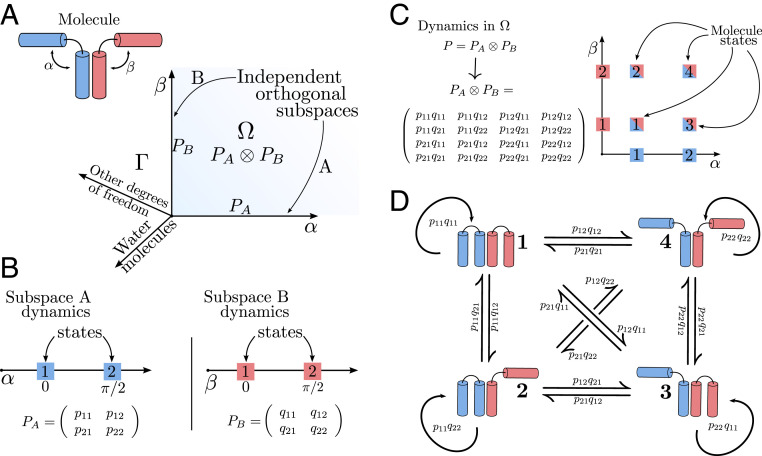Fig. 2.
Operator decomposition and discretization on a test molecule. (A) A test molecule is decomposed into two subsystems (blue and red). The two angles and span subspaces and corresponding to the two subsystems, respectively. The space is composed of all system degrees of freedom. The space is the Cartesian product of and and its dynamics are described by Perron–Frobenius operators and , respectively. The dynamics in are given as the tensor product . (B) The molecule has metastable states at and ; the subspaces and can be discretized into MSMs with transition probability matrices and . The quantities and are the transition probabilities from state to of subspaces and , respectively. (C) The discretized dynamics in are given by the tensor product , yielding the four states of the full molecule. (D) Illustration of the four possible states of the molecule and the transitions between them.

